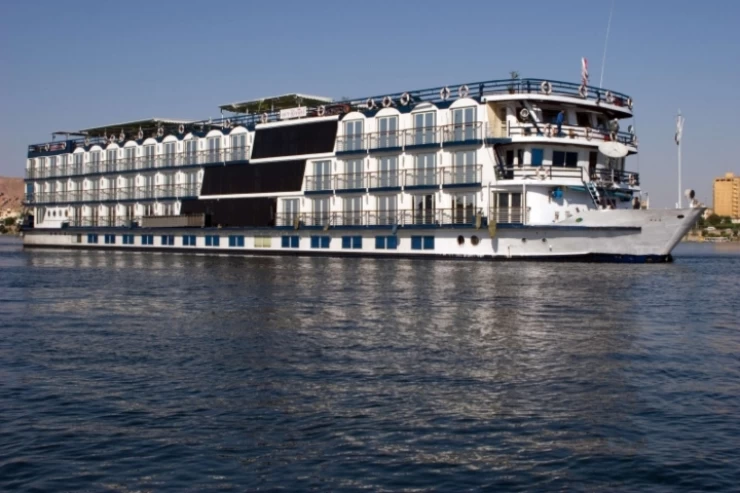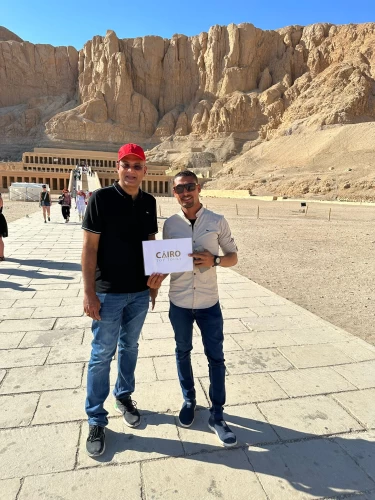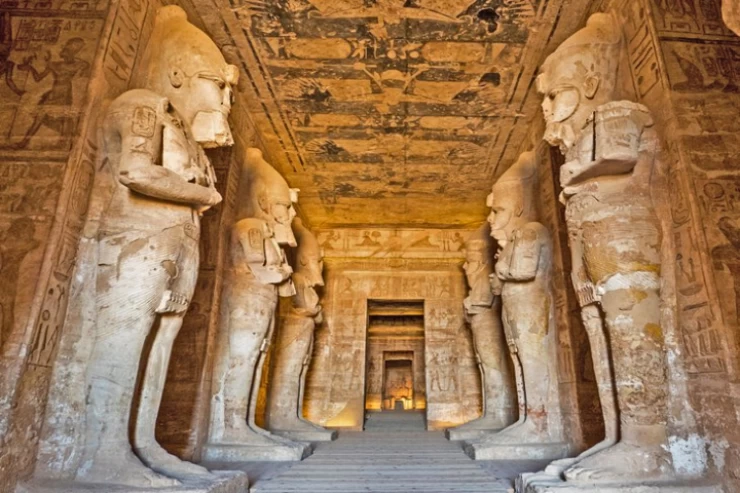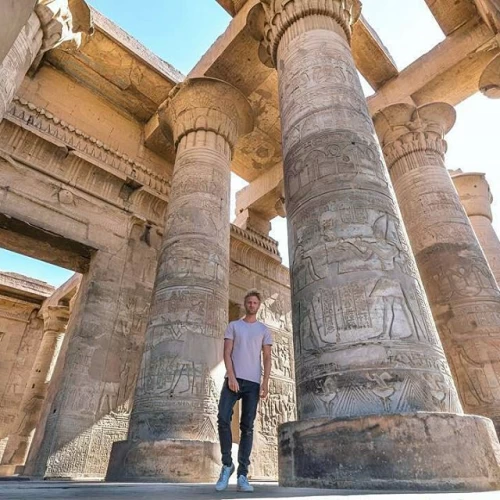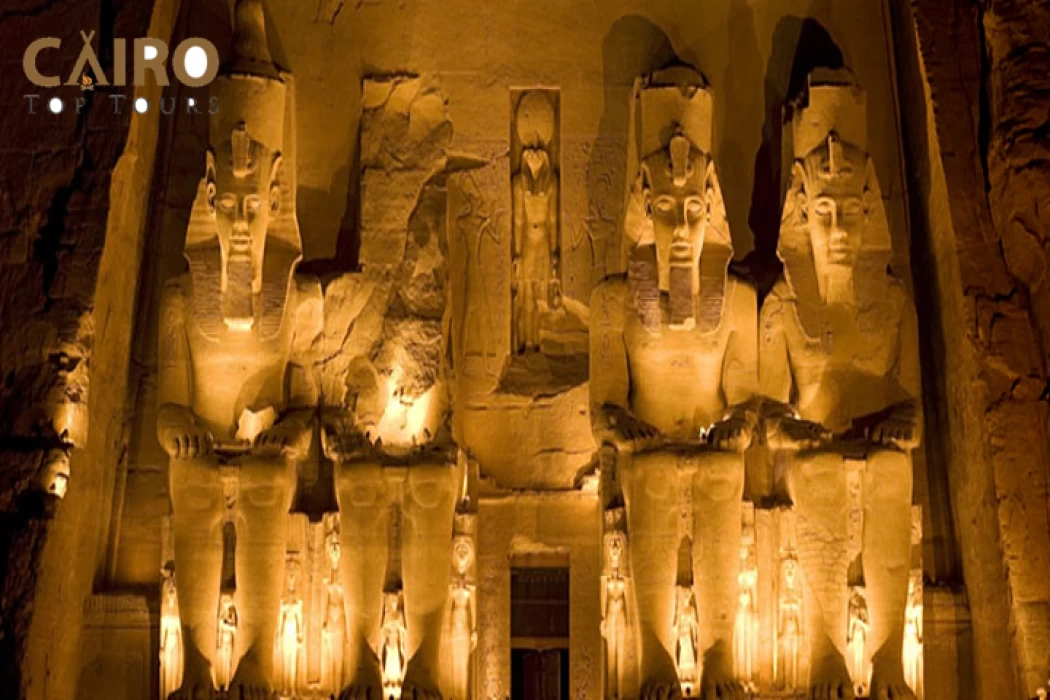
Abu Simbel Temples
Abu Simbel Temple and King Ramses II: The Immortal Genius of the Pharaohs
The Abu Simbel Temple stands as perhaps one of the most excellent human constructions from the time of ancient Egyptian history. It is living evidence of a grand achievement of the Pharaonic civilization and of its architectural genius. Built by the strongest and most remarkable pharaoh of ancient Egypt, King Ramses II, it was intended primarily for the glorification of his name and the glory of the empire.
King Ramses II: His Ancestry and Origin
King Ramses II, known as “Ramses the Great,” was the third pharaoh of the Nineteenth Dynasty. Born in 1303 BC, he took power in his early twenties and ruled the country for about 67 years, one of the longest reigns in Pharaonic history.
His political and military achievements
Military expeditions: Among the many military campaigns waged by Ramses II for the borders of Egypt, one of the most memorable was the Battle of Kadesh against the Hittites, which proved historic with the signing of the first written peace treaty on record.
Internal stability: Economic prosperity was the other achievement through which he brought internal harmony, enabling him to build many monuments.
Personal life: He took many wives, but the most notable was Queen Nefertari, whose love he immortalized in a special temple erected beside his own at Abu Simbel, and he had more than 100 sons and daughters.
geographical position
The Abu Simbel Temple represents an archaeological site of southern Egypt on the west bank of Lake Nasser, around 290 kilometres southwest of Aswan.
It is also one of the World Heritage Sites under the Nubian Monument, which begins wherever the river initially flows from Abu Simbel to Philae (near Aswan).
The twin temples are rock-hewn monuments that King Ramses II ordered carved into the mountains in the 13th century B.C. as a monument to himself and Queen Nefertari in perpetuity for his victory in the Battle of Kadesh.
The construction of the temple.
The temple complex was started around 1264 B.C. and continued until about 20 years later, in 1244 B.C. During his reign, Ramses II initiated an extensive building program throughout Egypt and Nubia, which was then under Egyptian control. The Egyptians valued Nubia as a source of gold and many other valuable goods for trade. Therefore, Ramses constructed numerous great temples in Nubia with the intention of showing these Nubians the strength of Egypt and converting them into Christian worshippers.
The most famous temples are the rock-cut temples near the modern village of Abu Simbel, at the second Nile waterfall, on the border between Lower and Upper Nubia, where there are two temples: the Great Temple, dedicated to Ramses II himself, and the Small Temple, dedicated to his main wife, Queen Nefertari.
It was known as the Temple of Ramses, beloved by Amun.
Over time, the temples were abandoned and consequently covered in sand.
By the time the 6th century BC rolled around, the sand covered the statues of the main temple up to the knees. The temple was forgotten until 1813, when Swiss orientalist J.L. Burckhardt found the cornice of the main temple.
Burkhardt shared the discovery with his Italian counterpart, explorer Giovanni Belzoni, who travelled to the site together, but they were unable to dig an entrance to the temple. Belzoni returned in 1817, but this time he succeeded in his attempt to enter the complex. He took everything of value he could carry with him. Tour guides at the site associate the name with the legend of Abu Simbel, that there was a young local boy who led the explorers back to the site early on to the buried temple that he would occasionally see in the quicksand. Eventually, they named the temple Abu Simbel after him.
Description of Abu Simbel Temples
The Great Temple or Temple of Ramses II
Facade: It consists of four giant statues of King Ramses, each about 20 meters high, sitting majestically guarding the temple.
The interior of the temple has the same triple layout followed by most ancient Egyptian temples, with a decrease in the size of the rooms from the entrance of the temple.
The temple is a very complex and unusual structure due to the many side chambers. The Hypostyle Hall is 18 meters long and 16.7 meters wide and is supported by eight massive osirid columns depicting a defiant Ramses linked to Osiris, the god of hell, and signifying the eternal nature of the pharaoh.
The monumental statues along the wall on the left side bear the white crown of the tribal face, while those on the opposite side wear the double crown of the maritime and tribal faces.
On the lower part of the walls of Brunaos are images of battle scenes from the ruler's military campaigns. The statue is of the Battle of Kadesh on the Orontes River, called on this day Syria, in which the king of Egypt fought against King Qeynion. The most famous inscription shows the king on an arrow chariot shooting arrows against fleeing enemies who are taken prisoner, and other scenes show Egyptian victories in Libya and Nubia.
Astronomical phenomenon: Twice a year, on the day of his birth (October 22) and his coronation (February 22), the sun sets on the face of the statue of Ramses inside the Holy of Holies.
The Small Temple or Nefertari Temple
is dedicated to Queen Nefertari and the goddess Hathor.
The facade is decorated with six statues (four of Ramses and two of Nefertari).
This is one of the rarest temples in which the queen is the same size as the king, signalling her special status.
Saving Abu Simbel Temple
The 1960s were the period when this temple sat dangerously on the brink of sinking, thanks to the High Dam construction and subsequent flooding of Lake Nasser. In an unprecedented international effort at monumental heritage preservation, UNESCO organized the transfer of the temples from their original location to a higher and, therefore, safer site with the assistance of the Egyptian government and a number of other countries. The relocation campaign lasted four years, during which time the temple was disassembled into massive blocks of stone, brought to the new site, and reassembled with the same care and precision as before. This project stands as a remarkable instance of engineering accomplishment and one of the earliest examples of international cooperation in safeguarding cultural heritage.
Historically, it reflects the power of Egypt during the reign of Ramses II and shows Egyptian influence in Nubia.
Religious: It reflects the relationship between the king and gods such as Ra, Ptah, and Amun.
Cultural and tourism: The temple attracts thousands of visitors every year, especially during the sunrise phenomenon.







